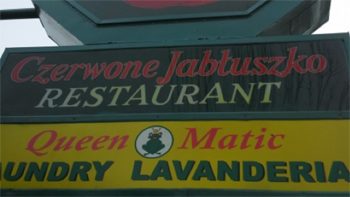New census data ranked Chicago on the list of most segregated cities in the United States, though declining slightly from years past. Associate Professor of Geography John Kostelnick, whose recent research interests includes ethnic change in Chicago neighborhoods, says that many Chicago neighborhoods are experiencing demographic changes that are redefining their composition.
Kostelnick:
Chicago is often referred to as “the city of neighborhoods.” The city has 77 officially defined community areas with defined boundaries, each of which are composed of many more neighborhoods that may be defined by different factors—sometimes very visible geographic features on the landscape like a freeway, the banks of the Chicago River, or an “L” train line—and other times more subtle factors such as culture, race/ethnicity, or even occupation type.
Segregation refers to the exclusion of certain peoples from others. The term “segregation” often brings to mind the Jim Crow laws and other racial segregation measures instituted in the South during the post-Civil War Reconstruction period, which were not struck down until the 1960s. Unfortunately, segregation was common in the North as well, as evident in the “redlining” of many neighborhoods in northern industrial cities (Chicago included) as African-Americans migrated to these cities from the South in search of jobs beginning in the late 1800s and early 1900s.
Many neighborhoods in Chicago are still highly segregated today, often characterized by poor living conditions for racial/ethnic minorities and lack of economic opportunity. Residents in segregated neighborhoods may feel “trapped” with little opportunity to improve their condition. For example, during a recent class field trip with students in one of my courses, we met with a fire fighter from a segregated neighborhood on the South Side who worked with disadvantaged youth living in the neighborhood. He described a program that took neighborhood kids on a day trip to downtown Chicago (approximately 4 miles away), which is the first time that many kids in the neighborhood had the opportunity to see that part of the city despite their close proximity. Unfortunately, the realities of this suffocating kind of segregation are still very real.
Is this integration for the long-term, or just part of a larger transition process?
However, in other Chicago neighborhoods, racial/ethnic integration shows more signs of promise. Perhaps the best example of integration I have seen is the Albany Park neighborhood on Chicago’s northwest side. Here it is common to see Korean, Mexican, Indian, Lebanese, and many other ethnic businesses all next to one another. There is a celebration of cultures in Albany Park, and a very real integration of diverse populations. It is actually one of the most integrated neighborhoods in the United States.
In other neighborhoods, racial/ethnic integration is ongoing, but it could simply be part of a broader transition between two groups. When students and I studied Milwaukee Avenue in Chicago, we found that the traditionally Polish neighborhood was increasingly becoming a destination for Latino migrants. Much of the transition is part of a shift as later generations of the original Polish migrants to the neighborhood become more economically secure and move out to the suburbs. Years from now, we may witness the same process with another group. So, is this integration for the long-term, or just part of a larger transition process?
As some neighborhoods continue to integrate, others are trying to preserve an existing cultural identity. For example, Humboldt Park is a Puerto Rican neighborhood in Chicago where the community, led by Jose Lopez, is working hard to maintain its Puerto Rican roots. For years, developers have looked to gentrify the area, which inevitably would threaten the Puerto Rican identity and likely force many residents to move away. Although gentrification by means of a new Starbucks often brings about economic benefits for a neighborhood, and potentially a new demographic of clientele, does this necessarily mean more integration as well? Or, will one racial/ethnic group simply be replaced by another?
The slow decline of segregation and rise of integration into Chicago’s neighborhoods is certainly a positive sign. I expect we’ll have to keep an eye on population shifts over the next 10 years or so and beyond to see if this trend continues along this track.


